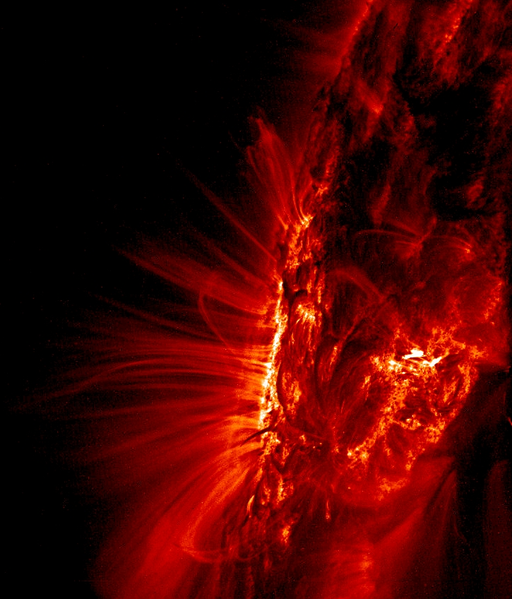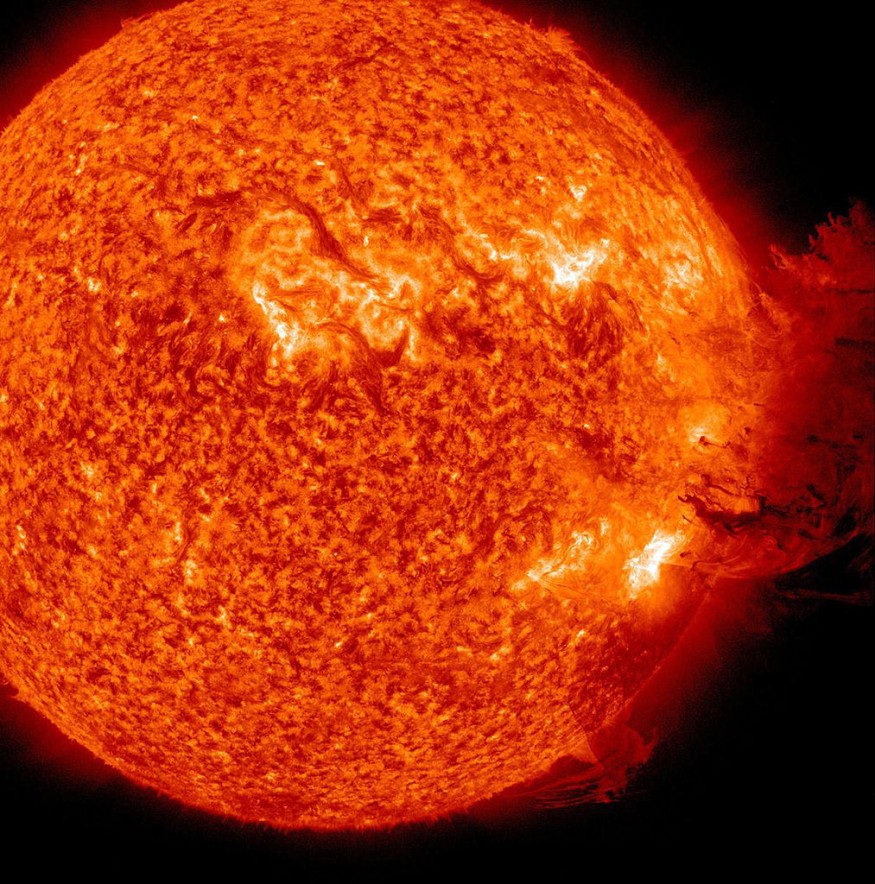Could Earth ever be destroyed by a particularly intense solar storm? When battling extreme space weather, our planet might have one significant edge.

Solar Activity
The sun's radiant heat is responsible for the existence of all life on Earth. What transpires, though, if the radiation spirals out of control and suddenly hurls billions of tons of charged solar material in our direction at thousands of miles per second? What happens when a solar flare directly hits Earth, and might a powerful enough one ever wipe out life as we know it on our planet?
Natural Defense
The solutions are nuanced, but most scientists concur on one point: Earth's magnetic field and insulating atmosphere keep us remarkably safe from even the strongest solar eruptions. Most hazardous radiation is absorbed in the sky long before it reaches human skin, although solar storms can interfere with radar and radio systems and disrupt satellite communication.
In the Heliophysics Science Division at NASA's Goddard Space Flight Center in Greenbelt, Maryland, Alex Young is the Associate Director for Science. "We live on a planet with a very thick atmosphere... that prevents all of the dangerous radiation that is produced in a solar flare," he said. In a 2011 video, Young addressed concerns that a solar flare would bring about the world's end in 2012. "Even in the largest events that we've seen in the past 10,000 years, we see that the effect is not enough to disrupt the atmosphere such that we are no longer protected," Young stated.
However, not all solar flares are harmless. The sheer electromagnetic force of a flare might damage electrical systems, internet connections, and other communication devices on Earth, causing chaos and possibly even death. In comparison, Earth's magnetic field prevents mass extinction from solar radiation. NASA and other agencies' space weather specialists take this issue seriously and carefully monitor the sun for any potentially dangerous activities.
Solar Flares
Solar flares are caused by the sun's magnetic field lines becoming stretched and twisted, which results in massive electromagnetic storms the size of planets forming on the sun's surface. These storms appear to us as chilly, dark patches on the sun called sunspots. Huge tendrils of magnetic fieldlines surrounding sunspots twist, spin, and occasionally shatter, producing solar flares, which are intense bursts of energy.

A recent Live Science post states that most of a solar flare's energy is emitted as ultraviolet and X-ray radiation. But a flare's powerful energy may also heat neighboring gas in the sun's atmosphere, causing coronal mass ejections (CMEs)-huge blobs of charged particles-to be sent into space. Any ensuing CMEs will directly strike Earth if a flare-up sunspot is facing our planet, usually taking anywhere between 15 hours and several days to get here.
Extreme Solar Flares
However, the largest and most powerful CMEs may compress our planet's magnetic field as they pass, creating a geomagnetic storm.
Atoms and molecules in the Earth's atmosphere get electrically charged as electromagnetic radiation from the sun enters our magnetosphere, producing visible effects all around the planet. The aurora borealis, usually only seen near the North Pole, can move down so far during such storms that it can be seen close to the equator.
Electrical grids may get overwhelmed and lose power, and radio and radar systems might go dark. Some scientists worry that a sufficiently massive CME may cause an "internet apocalypse."
Even yet, the 1859 Carrington Event, the strongest geomagnetic storm in recorded history, had little to no effect on the wellbeing of Earth's inhabitants or other living forms. There is no proof that previous, more powerful solar storms that tore through our globe affected people's health.
Related Article : Expert Warns 'Situation Worse than Covid' if Government Ignores Solar Flare Defense
For more cosmic news, don't forget to follow Nature World News!
© 2025 NatureWorldNews.com All rights reserved. Do not reproduce without permission.





